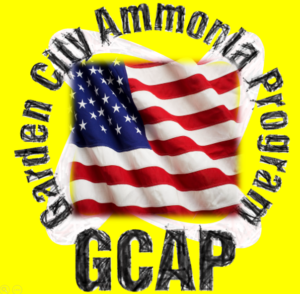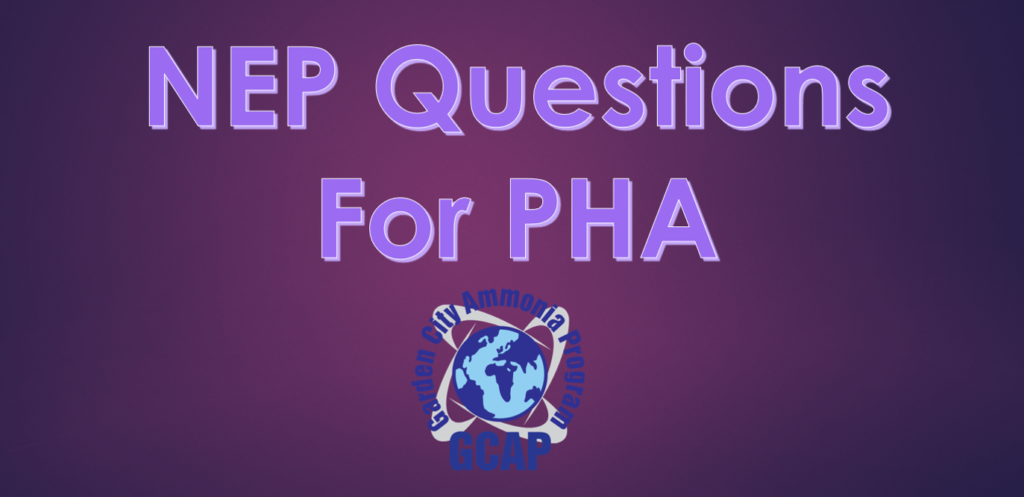Part 3 of 4: NEP Questions?
PSM regulation is over 20 years old and the National Emphasis Program running on 5 years, the regulators are not slowing down. Recent alerts from EPA (Anhydrous Ammonia at Refrigeration Facilities under Scrutiny) and OSHA (RAGAGEP in PSM Enforcement) show their pursuant for compliance. Obama has signed chemical executive orders and mandated re-writes of PSM/RMP regulations occurring now. End users in our industry have to finally understand this is nothing more than a mandated maintenance management program.
Garden City Ammonia Program (GCAP) has been behind the scene working hard building a database of every question asked by OSHA. It all started by filing “Freedom of Information Requests” for the last five years for all PSM citation incurred in the US. We have amassed hundreds of NEP questions, pictures, videos, and testimony. This was the foundation to our research for our PSM/RMP book, “Implementing Process Safety Management for Ammonia Refrigeration 4th edition”.
GCAP is now ready to release their database of the hidden NEP questions to the industry. GCAP has been supporting hands-on training and compliance since 2003. If you have taken the class you have received the book, seen many of the citations, and have great digital tools for implementing a successful program. The four top PSM violations the last two years running by element are: Mechanical Integrity, SOP’s, PHA’s, and Training. This article is part one of four covering Process Hazard Analysis.
1910.119(e) Process Hazard Analysis: Questions for Maintenance/Operational Personnel
- Are you familiar with what a Process Hazard Analysis (PHA)?
- Where you involved in a past PHA?
- What involvement did you have in the PHA?
- Have you seen the final PHA(s)?
- On what process was the PHA performed?
- What PHA method was used?
- Describe some of the different PHA methodologies.
- What does HAZOP stand for?
- Have the PHA’s addressed all the know hazards of the process?
- Have you been made aware of issues generated by the PHA?
- Are findings and recommendations from the PHA resolved in a timely manner?
- Are the findings and recommendation communicated to you?
- How did they communicate the findings to you?
- How would you determine if a finding and/or recommendation from a PHA was resolved?
- Do you feel that PHA recommendations are resolved in a timely manner?
- Please explain any circumstances of not resolved in a timely manner?
- How frequently must a PHA be revalidated or re-performed?
- Who needs to be on the revalidation team?
1910.119(e) Process Hazard Analysis: Questions for Supervisors/Managers/Coordinators
- Have you been involved with any PHA’s?
- Where in involved with any of the PHA’s for this facility?
- What involvement did you have?
- Have you seen the final PHA’s?
- What PHA method was used?
- Why was this method used?
- Describe some of the different PHA methodologies?
- What does HAZOP stand for?
- Was at least one member of the PHA team knowledgeable about conducting the methodology?
- Did at least one member of the PHA team have experience and knowledge specific to the ammonia system the PHA was conducted for?
- Have the PHA’s addressed all the known hazards of the process?
- Did the PHA address the complexity of the system?
- Did the PHA consider previous incidents that had the potential for catastrophic consequences?
- Did the PHA take into account engineering and administrative controls applicable to process hazards?
- Did the PHA include qualitative evaluation of the possible safety and health effects of failure of controls?
- Did the PHA include facility sitting?
- Did the PHA include human factors?
- Does the PHA address the hazards of power failure?
- Have you been made aware of any issues generated by the PHA?
- Are the findings and recommendations from the PHA resolved?
- Did the PHA evaluate human factors?
- How would you determine if a finding or recommendation from PHA was resolved?
- Do you feel that the PHA recommendations were resolved in a timely manner?
- What was the rational for the order of priority for the PHA items documented?
- Was the PSI information complete before the PHA was conducted?
- How frequently must a PHA be revalidated or re-performed?
- Who needs to be on the revalidation team?
- Did the PHA evaluate emergency shutdowns?
- Did the PHA team identify appropriate safeguards to control high consequence hazards? For example: eliminate the hazard, engineering control, administrative control, PPE control.
- If there are intervening valves to/from relief devices, does the PHA consider the possibility that these valves could be closed during operation?
- Does the PHA consider whether relief devices discharge to a safe location?
- Does the PHA consider where ventilation discharges to a safe location?
- Doe the PHA consider past incidents?
- Does the PHA consider relieving liquid ammonia to the relief valve header?
- Does the PHA consider all scenarios of ammonia releases due to draining oil?
- Have all findings/recommendations from the PHAs been resolved?
- Does your PHA consider the siting of all occupied structures?
- Did the PHA team identify and evaluate whether equipment which is described in procedures, have the same identifier in both the written procedure and in the marking/labeling in the facility?
- Did the PHA evaluate compressors, condensers, piping, evaporators, vessels, valves, pumps, purges, and controls?
- Did the PHA team identify and evaluate all situations where operators are expected to carry out a procedure to control an upset condition, but would not have enough time to do so based upon operating conditions?
- Did the PHA team identify and evaluate all situations where employees must close isolation valves during emergencies, but where doing so would expose the employees to hazardous situations?
- Are all ammonia relief valves and piping discharged to a safe location?
- Are operators per shift trained in emergency shutdown procedures?
- Did the PHA team evaluate the PPE Hazard Assessments for the facility including the refrigeration system?
- Did the PHA identify how many qualified operators are needed per shift?
- Did the PHA evaluate emergency operations?
- Did the PHA identify the risks of charging ammonia to the system?
- What if there is a stop valve before/after a pressure relief valve?
- Did the PHA team identify the risks associated with ice buildup on piping?
- Did the PHA team identify areas ammonia related equipment could be struck by a vehicle?
- Did the PHA team evaluate the location of valves that are not accessible?
We hope that this article and others to come help you and your company. Use these against your own program. Does your guidelines address these questions? Are you ready for a NEP audit!!
Sincerely,
Jeremy Williams


